Description
Scattered Writings is a complete and comprehensive collection of valuable writings of “Sadegh Hedayat”, a prominent Iranian writer of the last century, which are scattered in the memory. These writings were written by Hassan Ghaemian at the request of the author’s own father, Mr. Hedayat Gholi Hedayat (Etezadolmolk). Hassan Ghaemian is an Iranian writer and translator born in 1295 in Babylon and completed his education at the School of Higher Business Studies in Paris. He was a supporter and close friend of Sadegh Hedayat and also worked in the press. He was also involved in translating the works of writers such as Franz Kafka.
The book “Scattered Writings” was published in 2005 by “Negah Publications”, which includes various stories, articles, pieces and pamphlets, and the French writings of “Sadegh Hedayat”. First of all, there is a complete introduction to this book, and it is explained in detail about this book and its content, which is very interesting and readable for those who are interested in the works of this author.
Some of the stories in this work are “The Old Crow”, “The Thorny Raspberry”, “The Abyssinian Swamp”, “The Tale with the Result”, “The Blind and His Brother” and “The Shadow of the Mughal”. This book also provides an introduction to Khayyam’s quatrains, which was published by Sadegh Hedayat in 1302.
The author said of himself: “My biography does not contain any salient points. I have not had a significant event in it, I have not had a title, I do not have an important diploma and I have not been a brilliant student in school, on the contrary, I have always faced failure. In the departments I have worked in, I have always been a vague and anonymous member, and my bosses have been jealous of me. As I have resigned, I have been accepted with delightful joy. “All in all, wasteful use is the judgment of the environment about me, and that may be the truth.”
About Sadegh Hedayat, the author of scattered writings
Sadegh Hedayat, an Iranian writer and intellectual, was born in February 1981 in Tehran. He spent his childhood in educated families and went to a seminary in Tehran. As a young man, he learned French and became acquainted with world literature. He started writing from that time and wrote the book “Man and Animal”. He was an animal lover and therefore turned to a vegetarian diet. After finishing high school, he went to Europe to continue his studies in pure mathematics in Belgium, but after a while he left it unfinished and went to Paris to study architecture.
“Sadegh Hedayat” was in a bad mood in Paris and once committed suicide. During this period, he wrote the plays “Parvin Dokhtar Sasan”, “Zandebegoore” and the short story “Madeleine”. He was close to Massoud Farzad, the great Alavi and Mojtaba Minavi, and was also involved in social and political activities. He always criticized the economic and social conditions of that period in Iran and in 1314 the pen was banned. “Sadegh Hedayat” went to France again in 1326 and on April 10, 1931, he burned all his works and committed suicide.
In parts of the book we read scattered writings:
A pen, a small book and nothing else. It was clear how he could hope to find the money on the table! … He had to go back, but a clever bite, a kind of cleverness, could save him … He approached the bed next to the door. There was something on the chair. He put his hand forward. It was a mess. Carlo broke his heart … shouldn’t he take it? Why did this man make his gun available? If he wakes up and sees him … what does it matter? He will say, “Sir, get up from the last three hours.”
Sheshlul put in his place and pursued his search. He approached the other chair. This is the shirt, and then God took what he was looking for … a wallet … and took it in his hand. A whisper came. Carlo lay agilely on the side of one of the beds …. The other whispered voice rose and the loud breathing of one of those sleeping men … a slow cough after a blackout, a deep blackout. Carlo, who was holding the wallet, dried up without moving, nothing moving.
The horizon turned white. Carlo did not dare to get up. Then he went to the door on all fours and dragged himself into the corridor. He got up slowly, took a deep breath, and opened the empty bag that had three seats. To the left and right of it were several silver coins. The hole between them was closed with a special hook. Carlo knew it was his duty to open it and dipped his two fingers in it. He got three gold coins. At first he thought of taking two of them, but he resisted the temptation. He took one of the twenty francs and closed it.
Then, sitting on his knees, he looked back at the half-open room, which he had turned off again, and with a swift motion led the bag down to the second bed. If the passenger wakes up, he will think that the bag has fallen off the seat and slipped there. Carlo got up slowly. Suddenly a soft hiss was heard and a voice came asking:
Carlo held his breath, took a few steps back, and dragged himself into the attic. He was safe there. He listened again and heard a call from the bed. Then there was a blackout. He held the gold coin between his two fingers. He had reached his heart!
Sadegh Hedayat’s scattered writings can be divided into the following three distinct categories:
First – stories.
Second – various articles, parts and pamphlets.
Third – what Sadegh Hedayat wrote to France.
In the present collection, the mentioned writings are classified in the above order.
According to Mr. Etezadolmolk, the title of Sadegh Hedayat’s works in the new edition will be according to the list mentioned in the present collection and includes nineteen titles. As a result of Hedayat’s works, what was published as a separate book during his lifetime will be published in the same way in the future, except for “Alavieh Khanum” and “Velangari”, “Parvin Dokhtar Sasan” and “Isfahan “Half the World”, “Zand Vahuman Yassin” and “The Biography of Ardeshir Papkan”, which will be published together. Of course, the sum of two works is not due to the occasion or similarity of the subject or their simultaneity in terms of the date of writing or the date of publication, but only because of their small volume that both works must be published together.
Of course, it is possible to consider another plan for the title of Sadegh Hedayat’s writings, for example, the article “Folklore or Tudeh Culture” (listed on pages 449-494 of the present collection) with the recently published book “Nirangistan” and the article “Folk Songs”. (Published on pages 349 to 367 of the present collection) together with the pamphlet “Osaneh” (listed on pages 291 to 334 of the present collection) and also translated the Pahlavi texts namely: “Zand Vahman Yassin”, “Ardeshir Papkan”, “Report Gumaneshkan “,” Gojasteh Abalish “,” Shahrestanaye Iranshahr “were published together and so on, but now the opinion is that the original condition of Sadegh Hedayat’s books should be preserved as much as possible.
The text of some of the writings published in the present collection is in accordance with the text that Sadegh Hedayat revised during his lifetime (part of a revised translation written in his own handwriting on the next page), but some of these writings The revised works are few because he had taken the revised works with him to Paris, and it is not yet clear who owned the works.
A part of the text of the story of “Thorny Raspberry” which was published in the twenty-third pamphlet of the third period of “Afsaneh” and was later revised by Sadegh Hedayat.
Of course, the principles of humanity and honor dictate this, while Sadegh Hedayat’s works are introduced to the world for the first time after his death.
As far as I know, Hedayat has revised all his works to the extent that the text of some of them has been greatly increased after the revision, for example, about the book “Nirangistan”, the notes that Hedayat added to the book. It even went beyond the original text of the book, what a general guide between the two pages
“Nirangistan” has pasted one or two sheets of white paper, with notes written on them, but unfortunately Hedayat’s revised writings are now missing, and the recently published book “Nirangistan” is based on the same original text.
In any case, apart from a few stories and a few articles that have been reviewed by Sadegh Hedayat and have been in my possession, the rest of the writings in this collection are according to the intact texts left by Sadegh Hedayat and provided to the publisher. . Because no text has been tampered with in the text of these writings, if in the present edition there are no common typographical errors or omissions by the proofreader, the text of the writings in this collection is the same text that was printed once during Hedayat’s lifetime.
Of course, we will not discuss or comment on the text of these writings here, this work should be postponed until the intention to research and follow in the works of Sadegh Hedayat or the intention to analyze these works and now such an intention is in the work No, at the moment our main purpose is only to collect the text of Sadegh Hedayat’s scattered writings, and if this were not done now, considering that some of Hedayat’s writings are rare and some are rare, and the existence of others is known only to Hedayat’s friends and relatives. It was much more difficult to collect scattered guidance writings in the distant future.
We will now briefly write a description of each of the three parts of this series that we find useful:
Part 1 – Stories
The first part of this series includes the following stories:
A- Stories written by Sadegh Hedayat and published in various magazines, but none of them in the collection of stories that
It has not been narrated by Sadegh Hedayat, such as: the story of “The Story of the Consequence”, “The Shadow of the Mongols”, “Tomorrow”, “The Water of Life”.
Storytelling with results (pp. 93-94)
The story of “The Story with the Consequence” is a short story that was first published in the third pamphlet of the third period of “The Legend”. This story has not been quoted in any of the collections published by Sadegh Hedayat, because the story is not very important, in a way that it can even be removed from Hedayat’s works, but because it was written by Sadegh Hedayat anyway. And has been published in the “Legend” collection and has been quoted in this collection.
This story is a guide from very old writings and in terms of literary value, it is not true of any other writings.
The Shadow of the Mongols (pp. 125-140) Scattered writings
The story of “Shadow of the Mongols” was first published in 1310 in a series called “Iran” along with two stories by two other authors. One or two weeks after the death of Sadegh Hedayat, one of the bookstores in Tehran, with the consent of one of the other two authors, hastily reprinted all the stories in the collection, which was prosecuted because it was not legally permitted, but later Mr. Mr. Etezadolmolk has refused to prosecute the publisher.
To explain, it should be added that, in principle, the publication of a work in a magazine or a public publication does not entitle any of the authors of that journal or publication to reprint their work later whenever they wish, and to publish the work of others in that journal or publication. It is also inserted to publish along with your work. Only if such an action can be done.
1- Introducing the book on YouTube
2- Introducing the book in Aparat


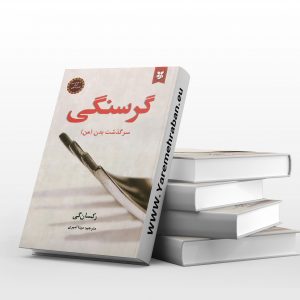
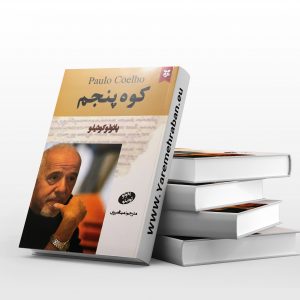
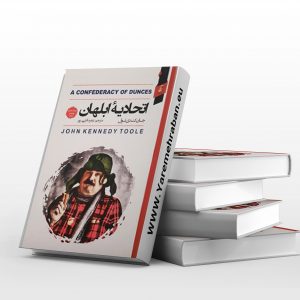
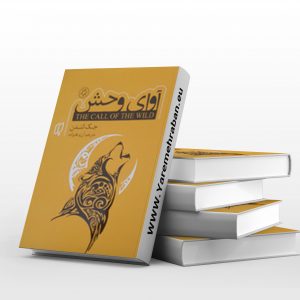


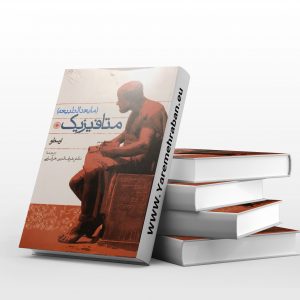


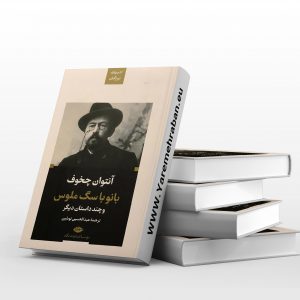

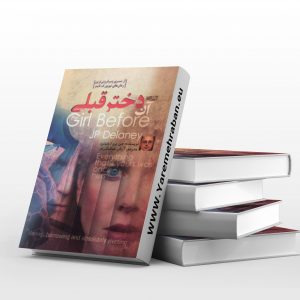
Reviews
There are no reviews yet.